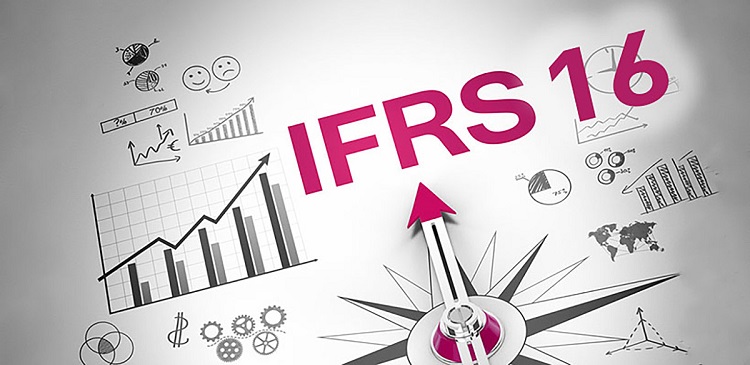The introduction of International Financial Reporting Standard 16 (IFRS 16) has marked a significant shift in how companies account for leases. Effective from January 1, 2019, this new standard requires businesses to bring most leases onto their balance sheets, enhancing transparency but also introducing complexity. Understanding IFRS 16 is crucial for businesses aiming to maintain compliance and optimize their financial strategies in the evolving accounting landscape.
Table of Contents
Understanding IFRS 16
IFRS 16 replaces the previous leasing standard, IAS 17, eliminating the distinction between operating and finance leases for lessees. Under IFRS 16, lessees must recognize a right-of-use asset and a corresponding lease liability for nearly all lease agreements exceeding 12 months.
Key Changes Introduced by IFRS 16:
- Balance Sheet Impact: Almost all leases are now recorded on the balance sheet, increasing both assets and liabilities.
- Income Statement Effects: Lease expenses are split into depreciation and interest, affecting profit and loss statements differently than before.
- Enhanced Disclosures: Companies must provide more detailed notes about their leasing activities, including maturity analyses and variable lease payments.
This approach provides a more accurate representation of a company’s financial obligations and resource usage, aligning accounting practices with economic realities.
Implications for Businesses
The implementation of IFRS 16 has several significant implications:
Financial Ratios and Covenants
Bringing leases onto the balance sheet alters key financial ratios:
- Debt-to-Equity Ratio: Increased liabilities may worsen this ratio, potentially affecting borrowing capacity.
- Return on Assets (ROA): With higher reported assets, ROA may decrease.
- Earnings Before Interest, Taxes, Depreciation, and Amortization (EBITDA): EBITDA generally increases under IFRS 16 because lease expenses are reclassified.
According to a study by PwC, companies in sectors like retail and aviation have seen average debt increases of 22% to 98% due to IFRS 16.
Operational and Strategic Decisions
Businesses must reassess:
- Lease vs. Buy Decisions: The financial statement impact may influence whether to lease or purchase assets.
- Contract Negotiations: Short-term leases (less than 12 months) are exempt, so companies might negotiate shorter terms.
- Asset Management: Enhanced asset recognition encourages better utilization and management of resources.
Stakeholder Communication
Transparent communication is essential:
- Investors and Analysts: Explaining the changes helps maintain confidence.
- Lenders: Renegotiating debt covenants may be necessary due to altered financial ratios.
- Internal Teams: Educating staff ensures alignment and compliance.
How to Adapt to IFRS 16
Adapting requires a comprehensive approach:
1. Inventory All Leases
Compile a complete list of all lease agreements, including those embedded in service contracts. This step is critical for accurate reporting.
2. Update Accounting Systems
Implement or upgrade software to handle the new requirements. Automation can assist with calculations and ensure consistency.
3. Revise Policies and Procedures
Develop internal guidelines for recognizing and measuring leases under IFRS 16. Clear policies help maintain compliance.
4. Train Staff
Educate accounting personnel and other stakeholders about the changes. Training ensures everyone understands their roles in implementation.
5. Analyze Financial Impact
Assess how IFRS 16 affects financial statements and ratios. This analysis informs strategic decisions and stakeholder communications.
6. Engage with Stakeholders
Communicate proactively with investors, lenders, and auditors. Transparency mitigates misunderstandings and fosters trust.
Benefits of IFRS 16
While challenging, IFRS 16 offers advantages:
- Enhanced Transparency: Stakeholders gain a clearer view of financial obligations.
- Improved Comparability: Standardized lease accounting facilitates better comparisons across companies and industries.
- Better Decision-Making: Detailed lease data supports strategic planning and resource allocation.
A survey by Deloitte found that 79% of financial executives believe IFRS 16 will improve financial reporting transparency.
Challenges and Considerations
Implementing IFRS 16 isn’t without hurdles:
- Data Collection: Gathering detailed lease information can be time-consuming.
- Complex Judgments: Determining lease terms and discount rates requires careful analysis.
- System Limitations: Existing accounting systems may not support the new requirements without upgrades.
Companies must plan and allocate resources effectively to address these challenges.
Conclusion
IFRS 16 represents a transformative change in lease accounting, necessitating adjustments in financial reporting, operations, and strategic planning. Businesses must take proactive steps to adapt, including updating systems, revising policies, and engaging with stakeholders.
By embracing the changes and viewing them as an opportunity to enhance transparency and efficiency, companies can strengthen their financial positions and build stronger relationships with investors and lenders. The key is to approach IFRS 16 not just as a compliance requirement but as a catalyst for improved financial management and strategic growth.

